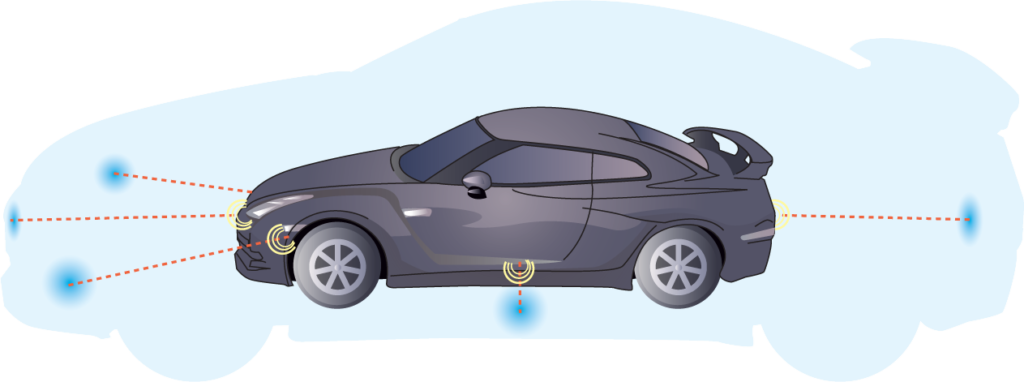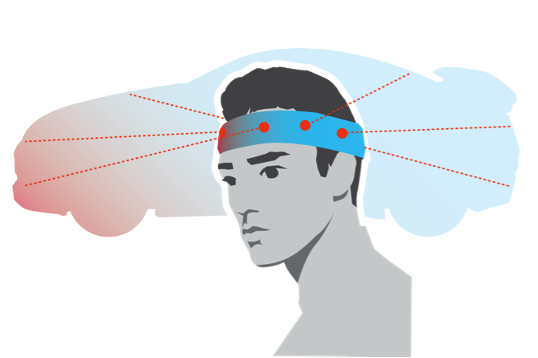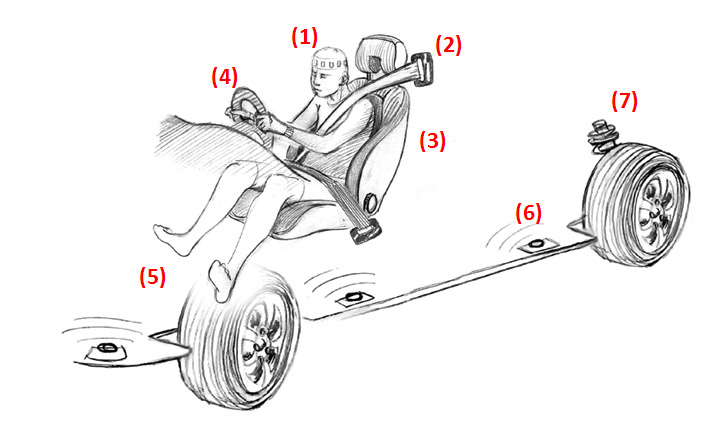Summary
This research extends and complements the Haptic Radar project. The goal of the Haptic Radar was to augment an individual spatial awareness through a set of invisible, sensitive “light whiskers” that extended the body outwards, and into regions not directly not covered by the eyes. The HaptiCar experiment consist on placing the sensors over the surface of a car, while maintaining the actuators over the body of the driver. This way, the driver would feel the surrounding of the car: obstacles on the car blind spots, proximity of the cars behind as “annoying” pressure on the back of the head, etc.
We demonstrated this concept using a reduced RC (radio-controlled) model car in 2009; the driver was able to “feel” the extended region of awareness around the miniature car through haptic cues (motor vibrators on a wearable headband) while seating in front of a computer console. Data from and to the car was sent wirelessly. A tiny camera was also embedded on the car, and the live video stream was sent to a portable computer in front of the “driver”. This configuration would then mimic certain aspects of real driving with the HaptiCar (combined visual and tactile information).
Reference
A. Cassinelli, Alexis Zerroug and M. Ishikawa, Haptic Radar and HaptiCar, exhibited at LAVAL VIRTUAL 2009, 22-26 April 2009.








